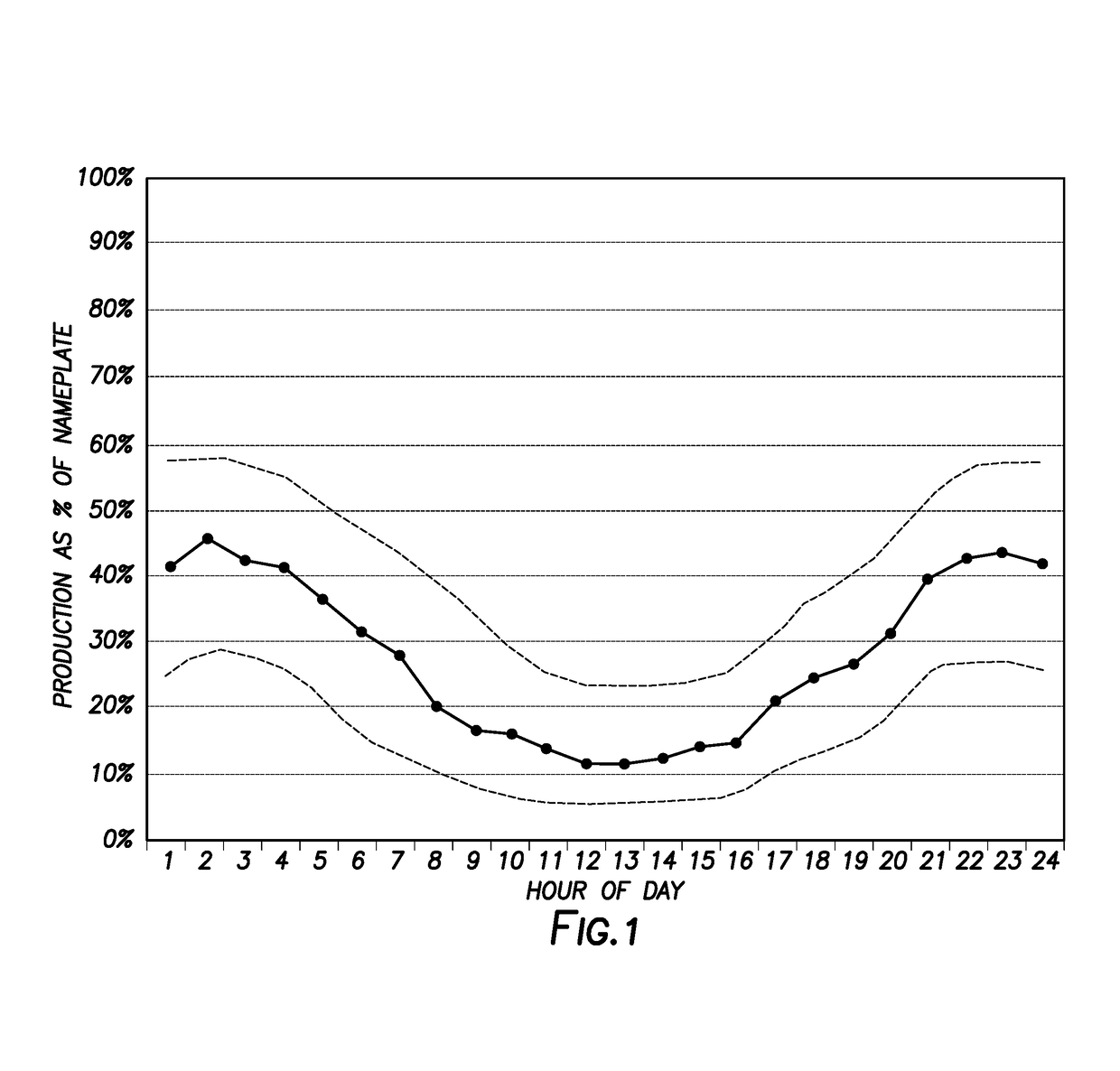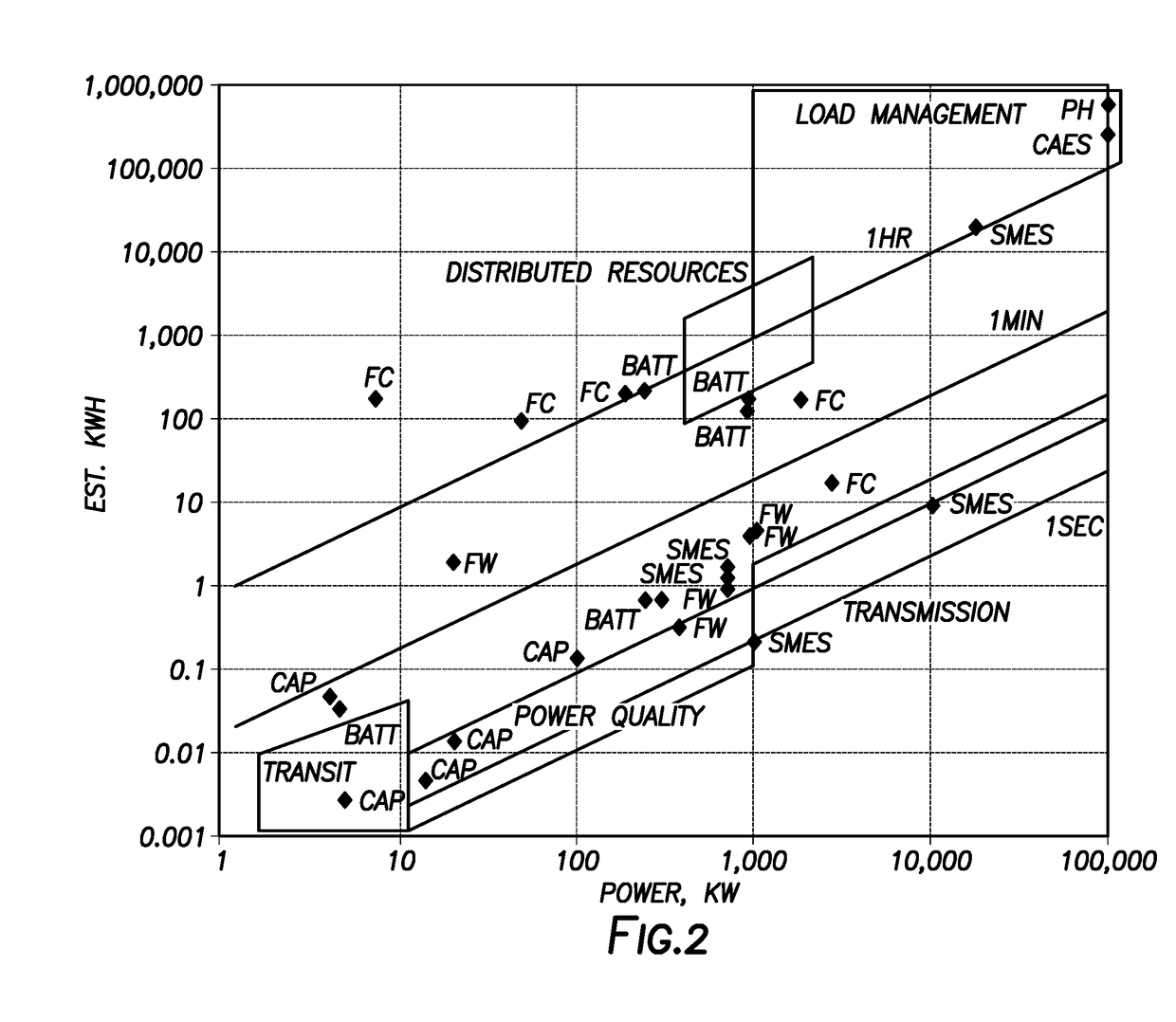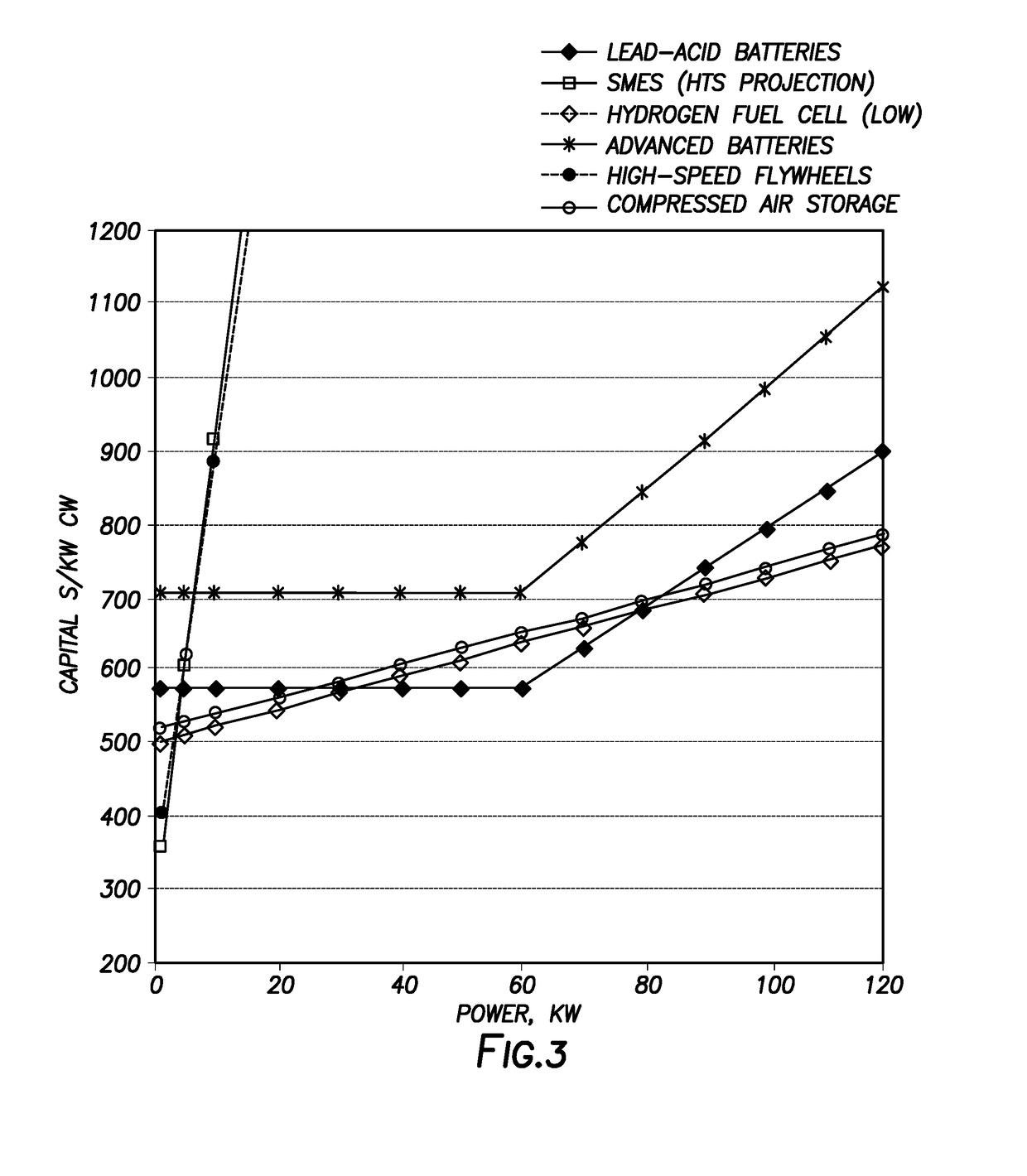Hydraulic Geofracture Energy Storage System with Desalination
- Summary
- Abstract
- Description
- Claims
- Application Information
AI Technical Summary
Benefits of technology
Problems solved by technology
Method used
Image
Examples
example 1
[0029]1 km deep well, with 1 cm average lift over 100 meter radius (typical oilfield frac)
Well depth:1,000mFracture radius:100mSlug volume:31,400,000m3Rock density:2,800kg / m3Slug mass:87,900,000,000kgSlug weight:862,000,000,000NewtonsAverage lift:1cmLift energy:8,620,000,000Joules8.6 E 9 JoulesStorage capacity:2,395kw-hr
example 2
[0030]1 km deep well, with 10 cm average lift over 500 meter radius[0031]Well depth: 1,000 m[0032]Fracture radius: 500 m[0033]Slug volume: 7.85 E 8 m3 [0034]Rock density: 2,800 kg / m3 [0035]Slug mass: 2.20 E 12 kg[0036]Slug weight: 2.16 E 13 Newtons[0037]Average lift: 10 cm[0038]Lift energy: 2.16 E 12 Joule[0039]Storage capacity: 5.99 E 5 kw-hr
[0040]Although explanations of hydraulic fracture properties are described, Applicant does not wish to be bound by a particular scientific theory concerning the properties of hydraulic fractures.
[0041]For comparison, a 3 MW wind turbine operating at typical 30% utilization factor generates 2.16E4 kw-hr per day. The unit described in example 2 can therefore store the entire nominal daily output of wind farm comprised of 167 turbines. If one purchased a battery based storage system for this amount of stored energy at current prices ($400 / kw-hr), a capital investment of roughly $239 Million would be required. We expect that the capital investment ...
PUM
 Login to view more
Login to view more Abstract
Description
Claims
Application Information
 Login to view more
Login to view more - R&D Engineer
- R&D Manager
- IP Professional
- Industry Leading Data Capabilities
- Powerful AI technology
- Patent DNA Extraction
Browse by: Latest US Patents, China's latest patents, Technical Efficacy Thesaurus, Application Domain, Technology Topic.
© 2024 PatSnap. All rights reserved.Legal|Privacy policy|Modern Slavery Act Transparency Statement|Sitemap



